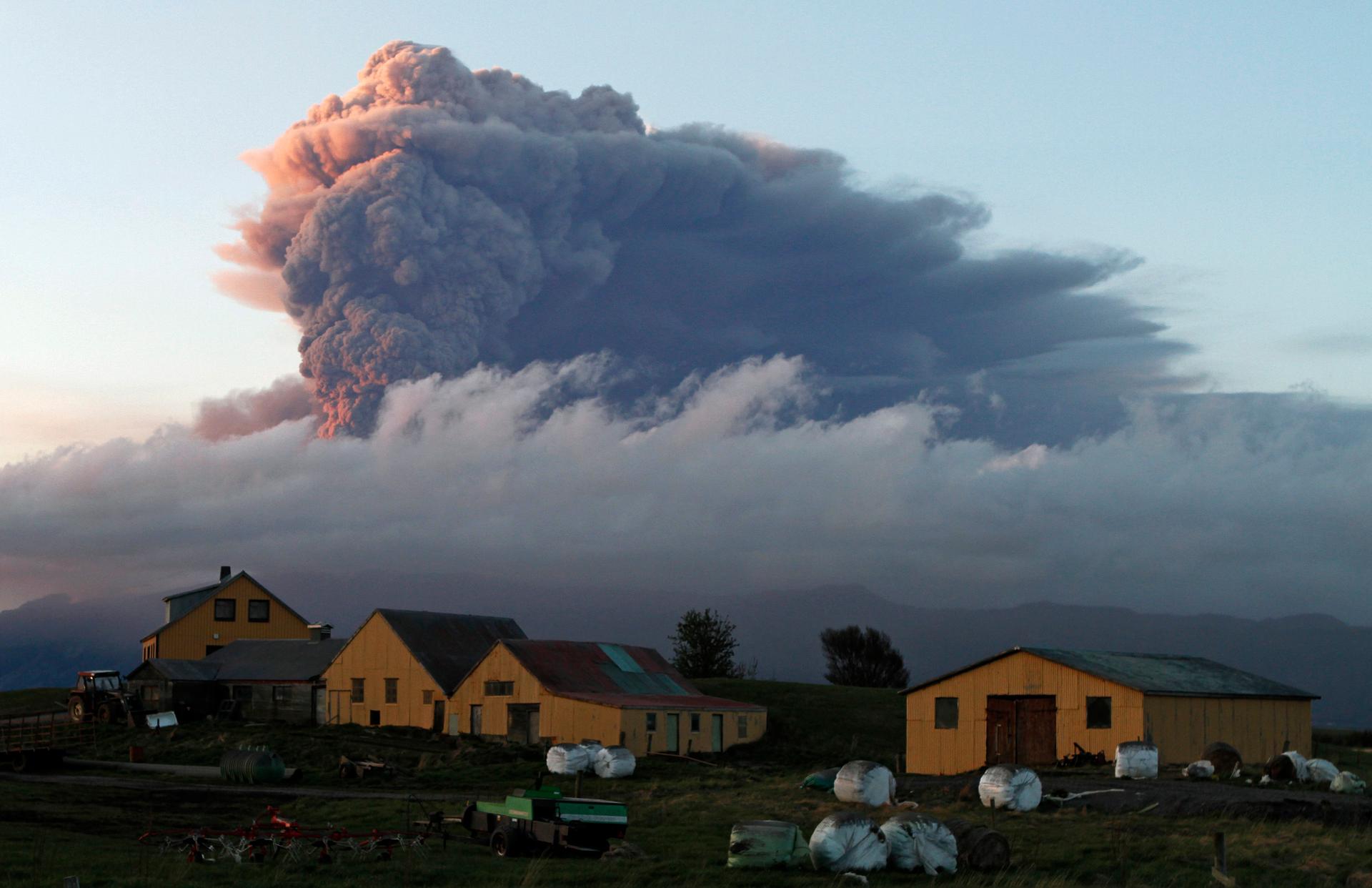Iceland’s largest volcano might blow its stack
A fresh cloud of ash rises from the volcano under the Eyjafjallajökull glacier in Iceland on May 16, 2010.
If you're in Iceland this week, the forecast is for a very strong indication of magma movement east of Bárðarbunga caldera. Seriously.
In English, that means Iceland’s Bárðarbunga volcano could be about to blow.
On Tuesday, authorities in Iceland raised the volcano alert level for air travel over the region to the second-highest level on the scale. That followed a big uptick in the intensity of seismic activity near Bárðarbunga that started on August 16.
The number of small earthquakes in the region is growing, which is a possible precursor to volcanic activity, says Bloomberg reporter Omar Valdimarsson in Reykjavik.
Such rumblings are fairly ordinary in Iceland. But there are concerns that this eruption could be huge if it happens. Bárðarbunga is Iceland’s largest volcano and sits under Europe’s largest glacier. That means the intensity of an eruption would depend not just on whether the magma beneath the volcano reaches the surface, but where.
“If it reaches the surface underneath the ice cap, it will result in a phreatomagmatic eruption,'” Valdimarsson says, in which “the water that’s contributed by the melting ice will make it a more explosive eruption." That would result in a huge ash plume.
On the other hand, he says, if the eruption were to pass the edges of the icecap, it would be "less explosive.”
With Europe’s largest glacier potentially in the path of destruction, are there are also worries about sea levels rising? Not likely, Valdimarsson says.
“It would never be the whole glacier,” he explains, “it would only be a tiny fraction of the glacier, so it (likely) wouldn’t have any impact on sea levels.”
But scientists tell him the ash plume from Bárðarbunga could reach as high as 10 kilometers, which is about the height where trans-Atlantic planes fly. When the Eyjafjallajökull volcano erupted in 2010, it affected trans-Atlantic travel for days.
Thankfulkly, Valdimarsson says, there’s at least no real threat to Iceland’s roughly 325,000 residents.
“There’s no inhabited areas just around [the volcano], and the only risk that’s posed to the general public is that they might be threatened by flash floods,” Valdimarsson says. “But according to the scientists that are monitoring the situation, they are likely to get as much as 12 hours’ notice before any floods near populated areas."
The worst thing that might befall Iceland is that "we could be landlocked for a few days when it comes to air traffic,” Valdimarsson says.
“And the other scenario is that more tourists will flock here. … Tourism has been growing in Iceland exponentially since the Eyjafjallajökull eruption, so I definitely do think that this helps get Iceland on the map.”
